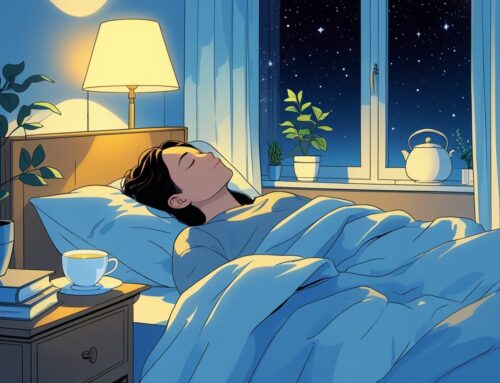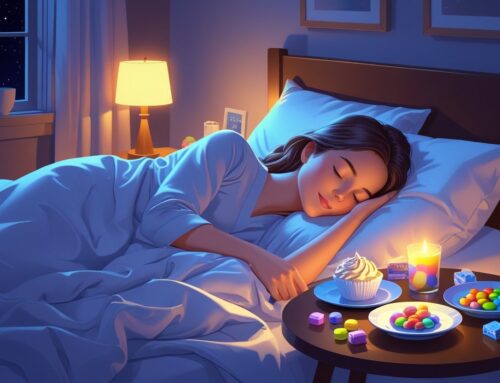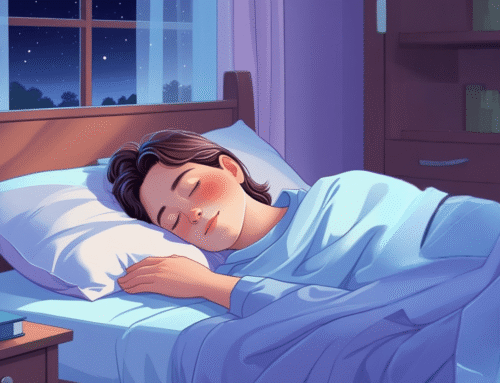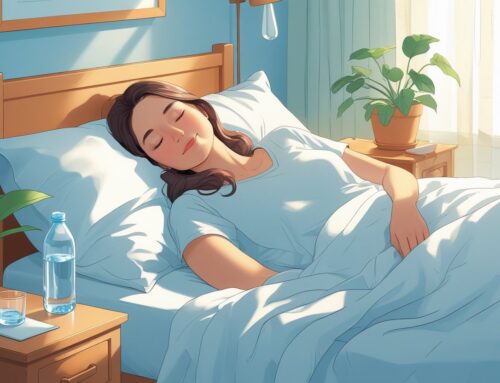Sleeping with an ear infection can be difficult. The pressure and pain make it hard to get comfortable, and lying flat often makes it worse. Keeping your head slightly raised or resting on the side without pain can help fluid drain and ease the pressure. A warm cloth, some over-the-counter pain medicine, and staying hydrated may also bring relief.
These small changes can make it easier to rest while your body heals. And if the pain doesn’t ease up or you notice fever, fluid, or hearing loss, it’s best to see a doctor for proper treatment.
Key Takeaways
- Sleeping in the right position eases ear pain and promotes healing.
- Small adjustments to your sleep setup increase comfort.
- Better sleep helps speed up recovery from ear infections.
- The best way to sleep with an ear infection involves using a mattress that provides firm, even support and adjustable elevation to relieve pressure and promote fluid drainage, which helps reduce pain and speeds healing.
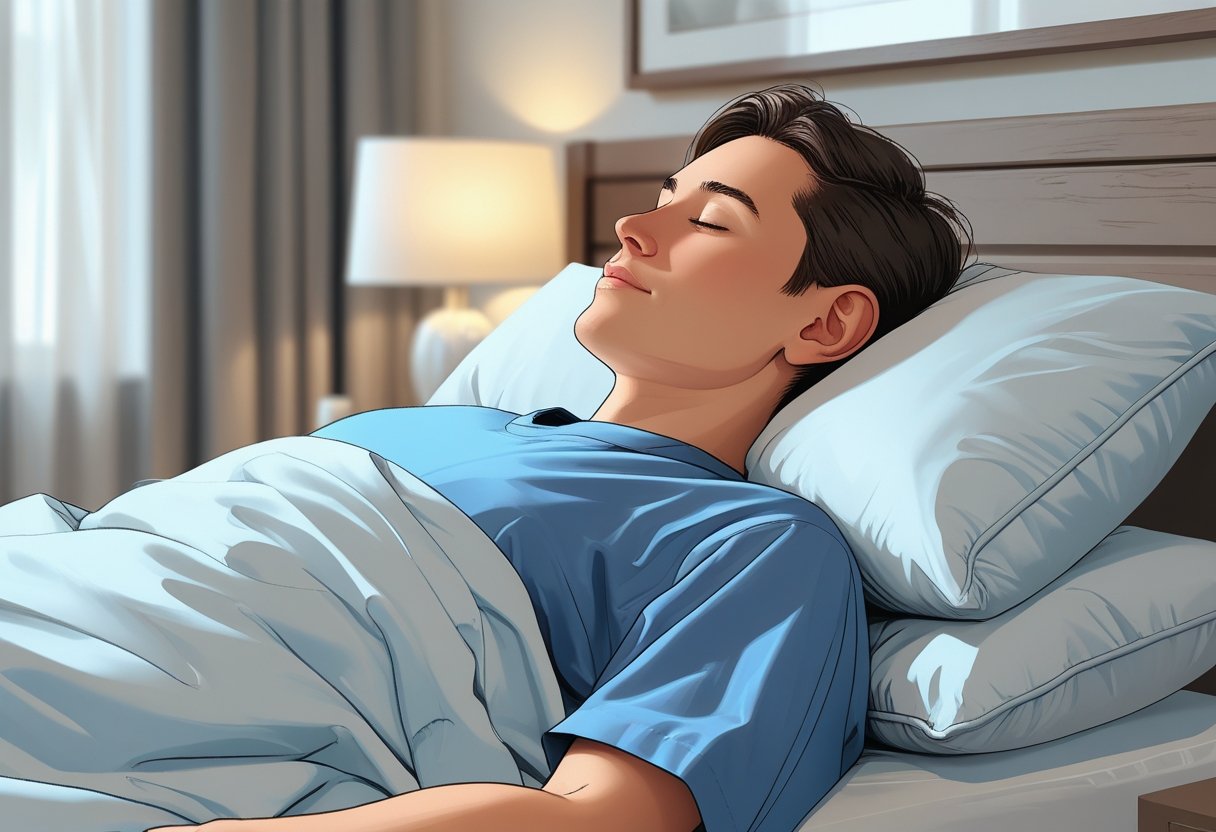
Choosing the Best Sleeping Position With an Ear Infection
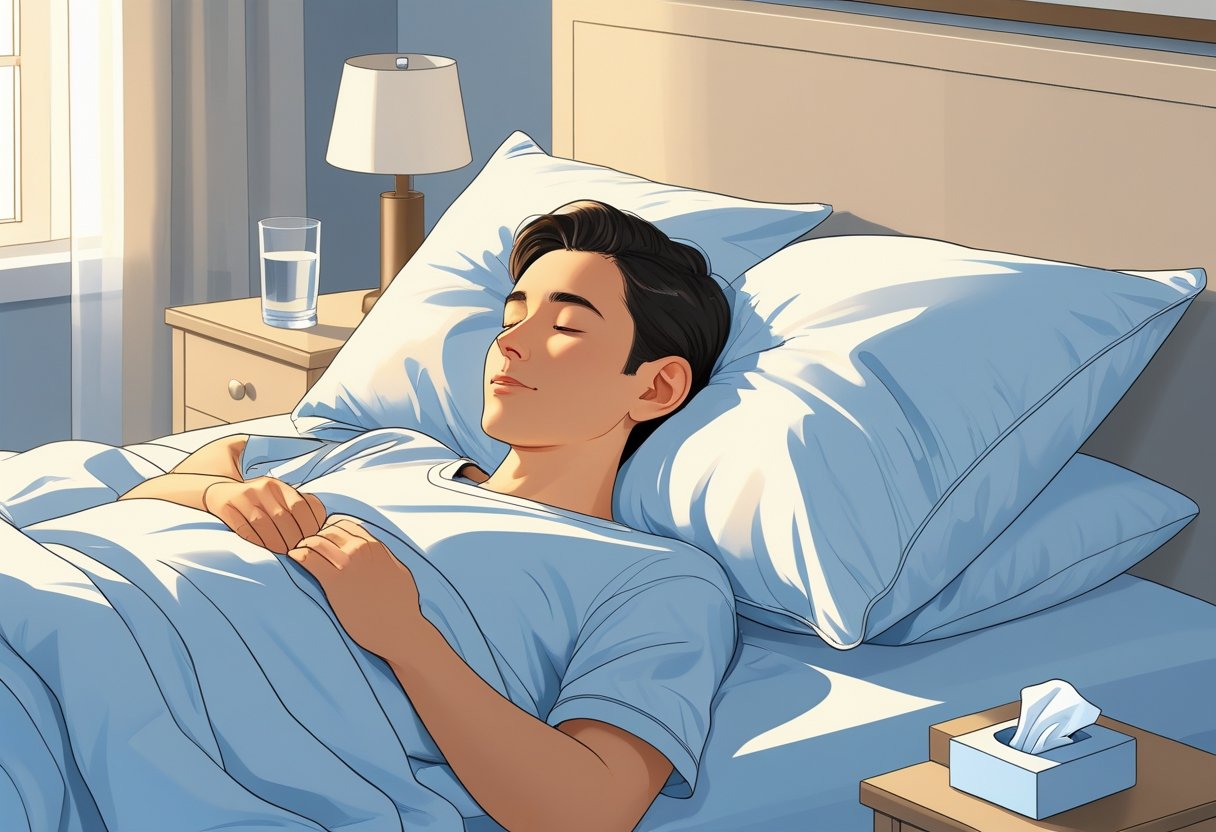
Sleeping comfortably with an ear infection means reducing pressure on the affected ear and encouraging fluid drainage. Proper positioning reduces pain and swelling while supporting healing. Choosing the right side and adjusting head height can improve comfort and promote faster recovery.
Side-Lying on the Unaffected Ear
The easiest way to rest is by lying on the side that doesn’t hurt. Keeping the sore ear facing up makes it easier for fluid to drain out instead of getting trapped. Gravity does the work here because it helps stop pressure from building, which means less pain.
Try not to sleep on the side with the infection. That only makes it hurt more and slows drainage. If you tend to roll over in your sleep, you can use pillows to keep yourself steady. This setup is usually the most comfortable option if you’re wondering which side to sleep on with an ear infection or when dealing with a clogged ear.
Elevating the Head for Drainage
Propping your head up while you sleep can ease the pressure in your ears. When your head is raised, fluid drains more easily through the eustachian tubes. You can do this with an extra pillow or by slightly tilting the head of your bed. The goal is to keep it high enough to help drainage but low enough to avoid straining your neck.
Sleeping like this is one of the simplest ways to handle an ear infection at night. It not only helps fluid move out of your ears but also takes some of the pressure off your sinuses, which can make the pain worse.
Sleeping on Your Back With Support
Lying on your back with your head propped up takes the pressure off both ears. This way, the sore ear isn’t pressed into the pillow, and fluid can drain more evenly. Using a pillow that supports your neck and keeps your spine straight can also make it easier to stay comfortable through the night.
If you’re not sure how to sleep with an ear infection or if switching sides makes it worse, this is a simple option instead of side-sleeping. You can also place a few pillows around your body to stop yourself from rolling over onto the painful ear. That little setup can help you rest without waking up from the discomfort.
Tips to Reduce Ear Pain and Enhance Sleep Quality
Dealing with ear pain from an infection can make it hard to fall and stay asleep. Easing the pain before bed and creating a comfortable sleep environment can make a big difference in getting quality rest despite the discomfort.
Applying Warm Compresses Before Bed
A warm cloth on the ear can help ease pain. The heat relaxes tight muscles and improves blood flow. Just soak a clean washcloth in warm water, wring it out, and place it gently over the sore ear for about 15 to 20 minutes. You can also switch between warm and cool cloth every 20 to 30 minutes. The warm one helps loosen stiffness and get blood moving, while the cool one numbs the area and keeps swelling down.
Putting a warm cloth on your ear before bed can make it easier to fall asleep by calming the irritation and taking the edge off sharp pain.
Over-the-Counter Pain Relief
If your ear hurts at night, over-the-counter pain relievers like ibuprofen or acetaminophen can help. They bring down swelling and dull the pain, which makes it easier to settle in and sleep. But be careful with how much you take. Always follow the instructions on the label. Some people switch between ibuprofen and acetaminophen to keep the relief going, but it’s best to ask a doctor before trying that, especially if you’re giving medicine to kids or dealing with another health issue.
Don’t give pain medicine to children under 2 unless a doctor tells you to. And keep an eye out for side effects. If the pain gets worse instead of better, stop using it and call your doctor.
Adjusting Pillow Height and Mattress Setup
Changing how you sleep can take some pressure off your ears. Adding an extra pillow or using an adjustable bed to lift your head a bit can help cut down fluid buildup and ease the pressure in your middle ear. If only one ear hurts, try sleeping on the other side so you’re not lying on the sore spot. Keeping the painful ear facing up makes it easier to drain and usually feels less uncomfortable.
It also helps to have a solid mattress that keeps your neck and back lined up the right way. A pillow you can adjust for height and airflow can give you a little more relief around the ear. These simple tweaks may not cure the pain, but they can make getting some sleep a lot easier when your ear won’t let you rest.
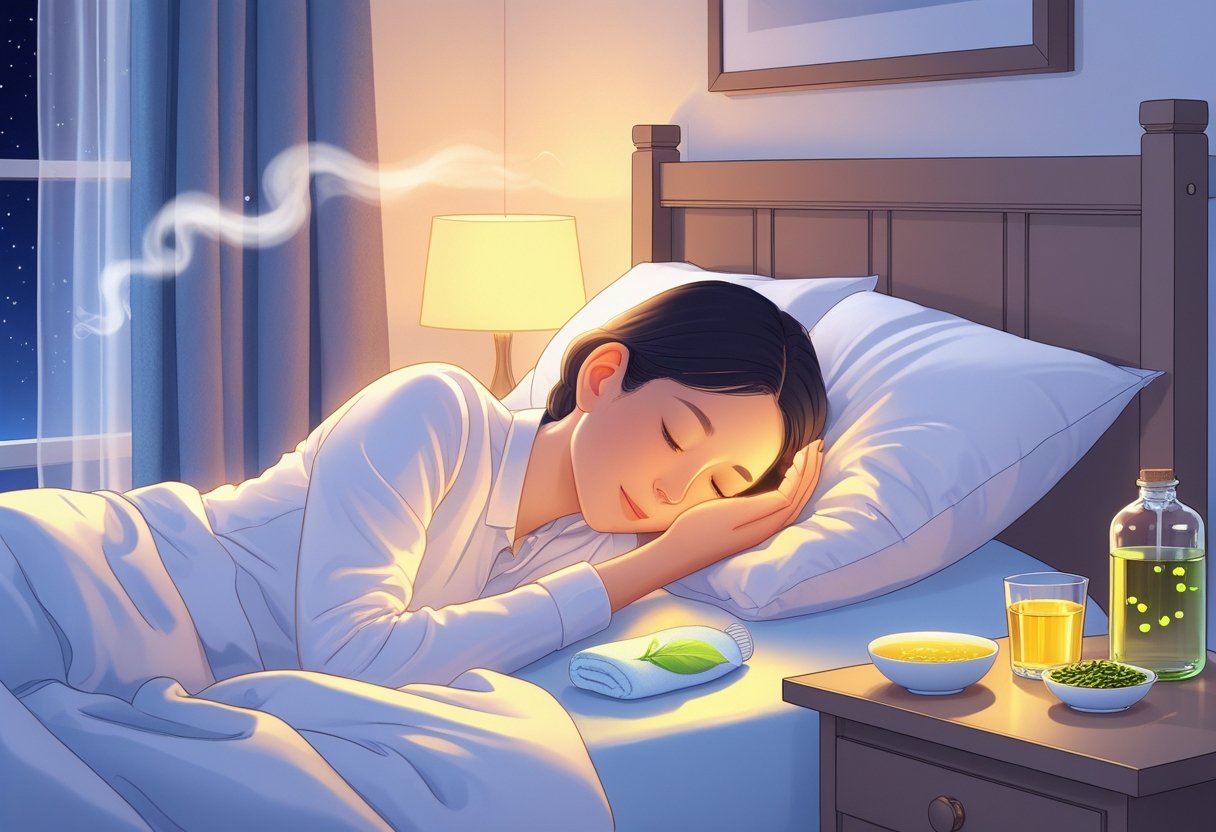
Creating a Restful Sleep Environment
A good sleep environment eases ear infection pain and supports the body’s healing process. Key factors include managing air quality, minimizing noise, and choosing bedding that provides comfort and proper ear positioning.
Controlling Temperature and Humidity
Keeping your bedroom cool can make a big difference when you’re dealing with ear pain. Aim for a temperature between 60°F and 67°F. Cooler air keeps swelling down and helps you stay comfortable without sweating, which can make irritation worse.
Humidity matters too. Try to keep it around 30% to 50%. If the air is too dry, it can dry out your ear passages and make the pain feel sharper. Using a humidifier adds just enough moisture to calm irritated tissues in both your ears and nose. It also keeps congestion from building up, which can block ear drainage. If you use a humidifier, clean it often. Dust, mold, or bacteria can collect inside and actually make things worse instead of better.
Noise Reduction and Soothing Ambiance
It helps to keep your space calm and quiet, but total silence can make the ringing from tinnitus feel louder. A little background noise, like a fan or a white noise machine, can take the edge off and make it easier to relax. Try to stay away from sudden or loud sounds since they can make things worse. Thick curtains or window inserts can also block out traffic or neighbor noise if that’s a problem.
Soft sounds work too. Gentle rain, ocean waves, or even calm music can help you unwind without pushing your ears too much.
Using Comfortable Bedding and Support
The right bedding can make healing easier by easing pressure on the ear. Lying on the side that isn’t infected helps fluid drain and can cut down on pain. A pillow that’s medium-firm works best. It should raise your head and neck a little but not press on the sore ear. Memory foam pillows are a good option because they shape your body and give support without adding more discomfort.
Your mattress matters too. It should be firm enough to stop your body from sinking in too much. That way, your spine stays straight and you can stay in a position that feels better. Clean sheets and hypoallergenic bedding also help by lowering the chances of irritation or another infection starting.
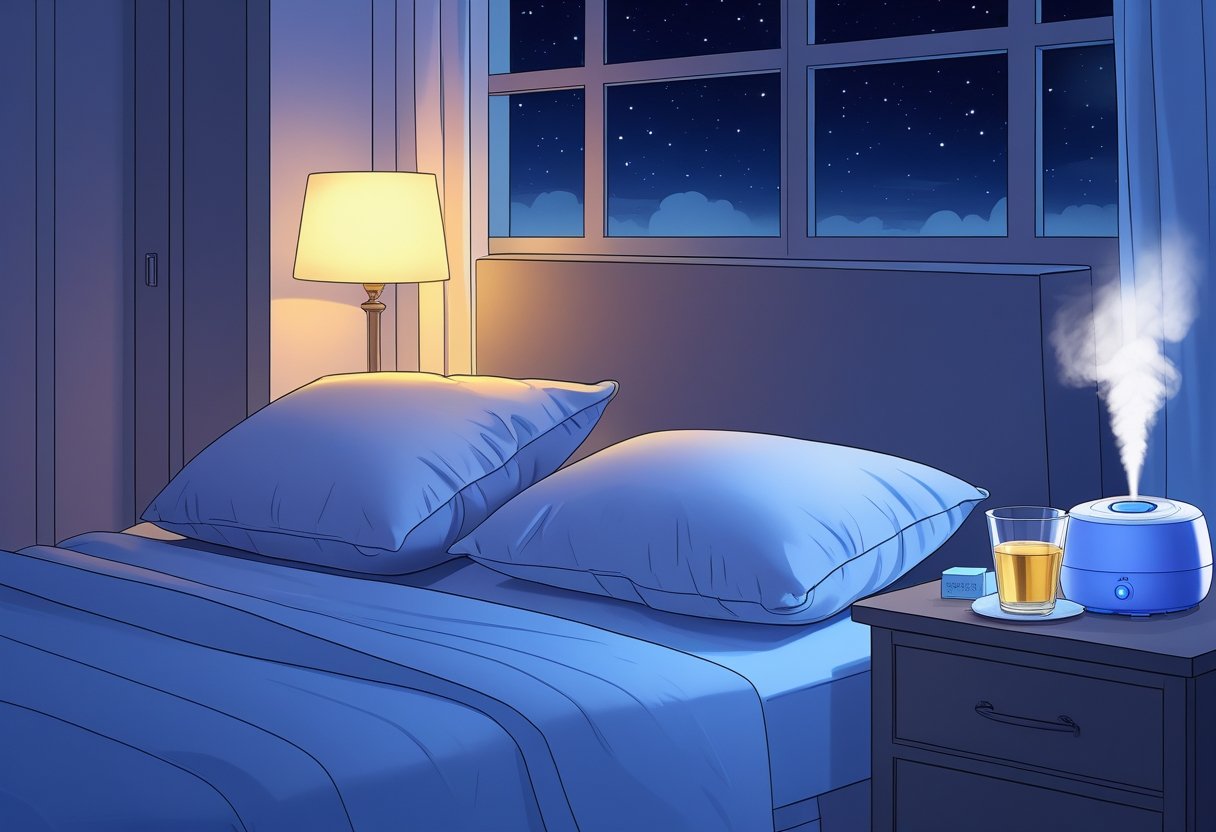
Understanding Why Ear Infections Disturb Sleep
Ear infections cause physical changes that make sleep difficult. Pain intensifies when lying down, and the infection may interfere with hydration and disrupt normal sleep cycles.
Nighttime Pain Triggers
Ear infections almost always feel worse at night. When you lie down, fluid and mucus can collect in the middle ear because gravity isn’t helping them drain. That extra buildup pushes on the eardrum and the swollen tissue around it. The swelling and pressure create sharp or throbbing pain. Even simple things, like rolling over or tilting your head, can make the ear ache more. It also becomes harder to find a position that doesn’t hurt.
At night, the pain feels stronger for another reason too: there are fewer distractions. During the day, you’re busy and your brain has other things to focus on. But in a quiet, dark room, the discomfort stands out. That’s why sleep often feels broken and restless.
Effect on Hydration and Sleep Patterns
When you have an ear infection, fever and stuffy sinuses can make it harder to stay hydrated. A fever makes you sweat more, so you lose fluids. A clogged nose can make you drink less water without even noticing. If you don’t get enough fluids, mucus gets thicker. That makes ear pressure worse and can increase the pain.
Sleep also takes a hit. Your body is busy trying to cool down and deal with the extra fluid, so you toss and turn. You might wake up needing water or shift around to find a position that feels better, but either way, deep sleep gets cut short. On top of that, infections put stress on the body and push cortisol levels up. High cortisol makes it harder to keep a steady sleep rhythm. The end result is restless nights and sleep that doesn’t really recharge you.
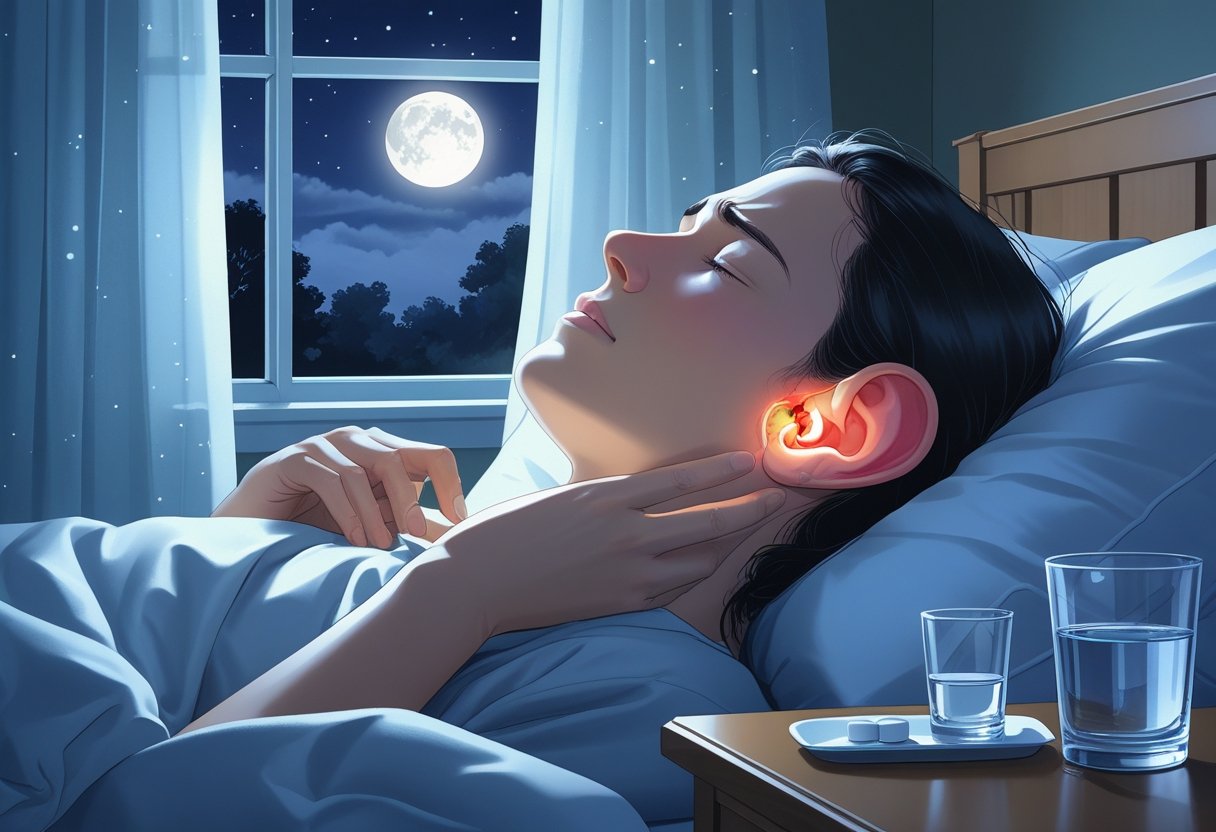
When to Seek Medical Attention for an Ear Infection
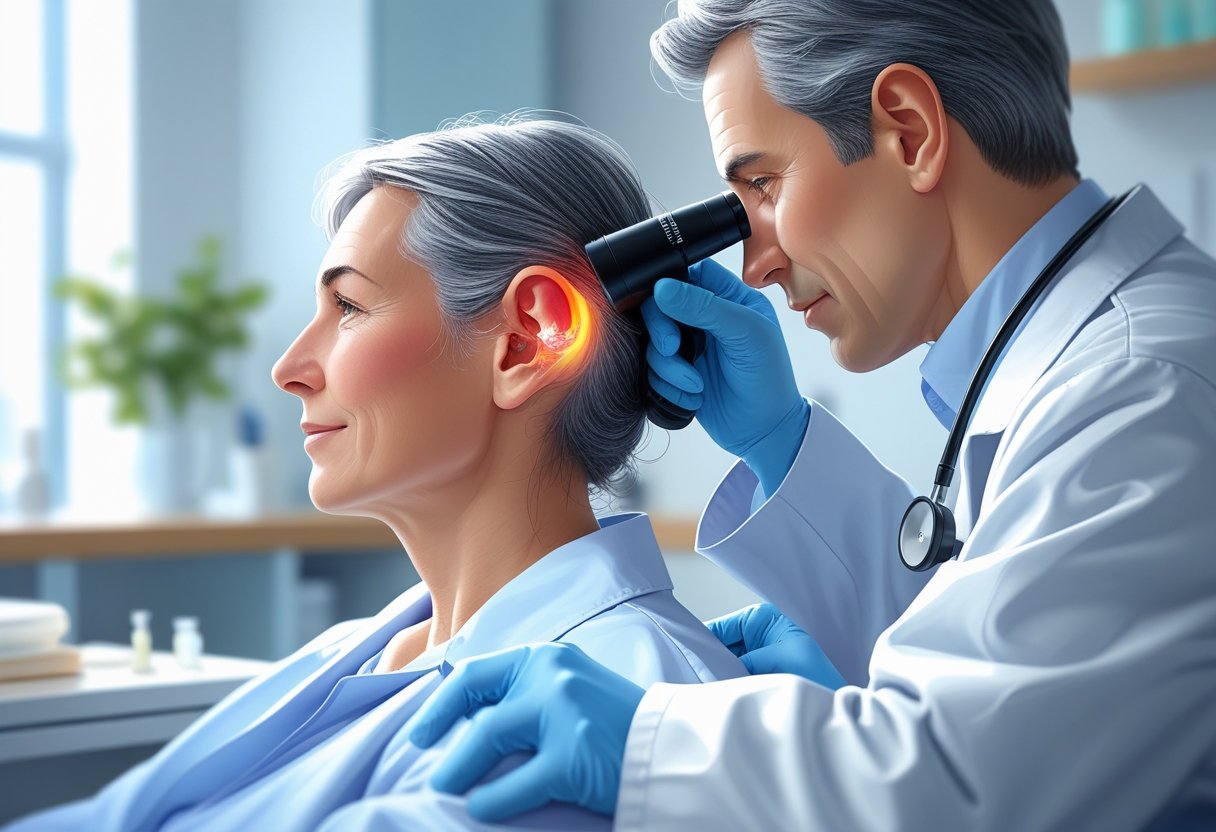
Knowing when to see a doctor can prevent serious complications and ease pain. Some symptoms and risk factors call for medical attention that goes beyond home remedies.
Recognizing Signs That Require a Doctor
If ear pain is sharp or severe, it’s best to see a doctor. A fever higher than 102°F (39°C) with ear pain is a warning sign that shouldn’t be ignored. If symptoms don’t get better within two days, medical care is needed.
Babies younger than 6 months should always be checked right away if there’s any sign of an ear infection. Other serious signs include vomiting, trouble breathing, or sudden changes in behavior. Adults who notice their symptoms getting worse or not going away should also see a healthcare provider.
Potential Complications to Watch For
If an ear infection isn’t treated, it can sometimes cause bigger problems. Hearing loss is one risk, and in rare cases, the infection can spread. This may lead to mastoiditis, which is an infection in the bone behind the ear, or meningitis, which can be very serious.
If you notice fluid that keeps draining from the ear, or if the pain comes back strong after it seemed to get better, that could mean there’s a complication. Getting checked quickly helps prevent lasting damage and makes sure you’re getting the right care.
Natural Remedies and Lifestyle Adjustments
Managing discomfort from an ear infection at night requires calming the body and supporting natural healing. Certain scents and adequate hydration help ease tension and reduce congestion. These steps give the body a better chance at restful sleep despite the irritation.
The Role of Essential Oils for Relaxation
Lavender and eucalyptus oils are often used for rest and relief. Lavender helps calm the mind, ease stress, and make it easier to relax before bed. Eucalyptus can open up the nose and sinuses, which makes breathing smoother if you’re feeling stuffed up.
The safest way to use them is simple: put a few drops of diluted oil in a diffuser or into a bowl of hot water to breathe in the steam. Don’t put oils inside or near your ear because they can cause irritation. Always make sure the space has good airflow.
If you’re sensitive to smells, try just a tiny amount first. Stop using it right away if you notice irritation or an allergic reaction. When used carefully, these oils can be a gentle part of your nightly wind-down and may help ease discomfort while you settle in for sleep.
Gentle Fluid Intake and Steaming Tips
Staying hydrated makes mucus thinner and eases sinus pressure. A warm drink, like herbal tea or hot water with lemon before bed, can keep your throat comfortable and stop it from drying out.
Breathing in steam is another simple way to clear your nose and relieve ear pressure. Just lean over a bowl of hot water, put a towel over your head to hold in the steam, and breathe for about five to ten minutes. It’s a natural way to loosen congestion. Be careful with hot water though, so you don’t burn yourself. If you’d rather not deal with bowls of steam, running a humidifier in your room can also help by keeping the air moist and stopping your nose and ears from drying out.
Using warm drinks along with gentle steam can make nights easier. You’ll breathe better, feel less stuffed up, and give your body a chance to rest while it heals.
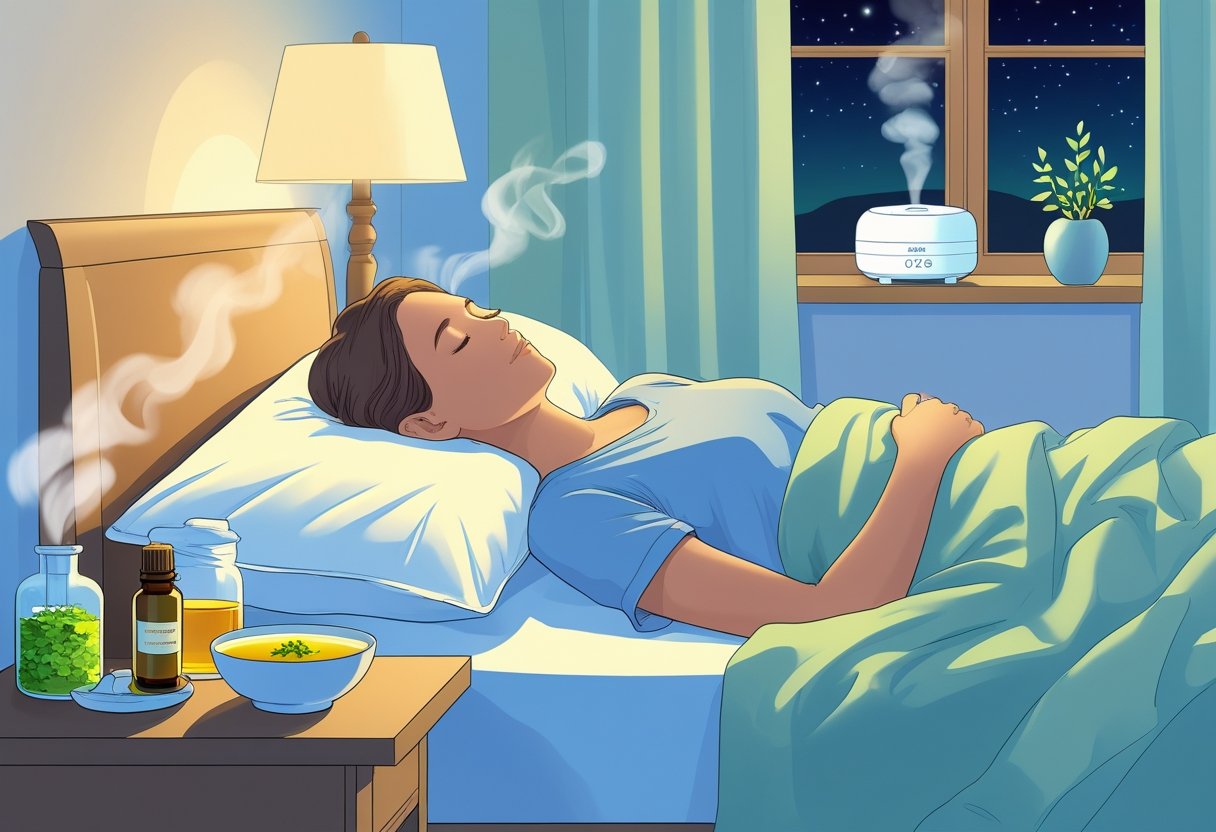
How the Right Mattress Eases Sleep with an Ear Infection
Sleeping with an ear infection can be tough, but the right mattress makes a big difference. A mattress that holds your body steady takes pressure off your head and ears, which helps reduce pain.
An adjustable mattress is even better. You can raise your upper body so fluid drains more easily from the ear. Sleeping at a slight incline also eases pressure and can help you breathe more comfortably, which supports healing.
The best choice is a mattress that feels firm and balanced. If your bed sags or feels too soft, your weight shifts unevenly. That puts extra strain on your neck and ears. A supportive mattress keeps your spine aligned so your muscles can relax.
It also helps to look for hypoallergenic materials in your mattress or pillows. Allergies can make ear infections worse by adding congestion or swelling. Fabrics that breathe and pull away moisture keep your sleep space dry and cleaner, which helps your body recover.
Here are key mattress features that help ease ear infection discomfort:
- Adjustable elevation: Supports fluid drainage and pressure relief
- Firm support: Maintains proper alignment and reduces strain
- Hypoallergenic fabric: Minimizes irritation and allergic reactions
- Breathable material: Keeps ear area dry and comfortable
If you want a mattress that checks those boxes, the Bear Star Hybrid might work for you. It has a hand-quilted cover that feels cool when you touch it and dries quickly thanks to its HydroCool fabric. Under that, there’s a layer of gel foam to keep heat from building up and to ease pressure on your body. The comfort foam beneath adjusts to different shapes and sleeping styles, so airflow and support stay consistent.
This mattress blends pocketed coils with sturdy foam layers. That mix creates a balance of firmness and cushioning, which helps keep your spine aligned and lowers pressure points. For anyone dealing with discomfort from an ear infection, that kind of support can make lying down a little easier.
Choosing a mattress with these features won’t cure the pain, but it can help you rest better while your body recovers.

Frequently Asked Questions
Sleeping with an ear infection requires careful positioning and treatments to reduce pain and support healing. Managing symptoms involves both physical adjustments and remedies that encourage drainage and comfort.

